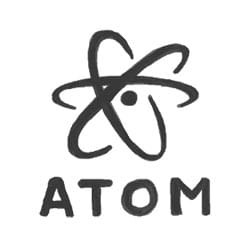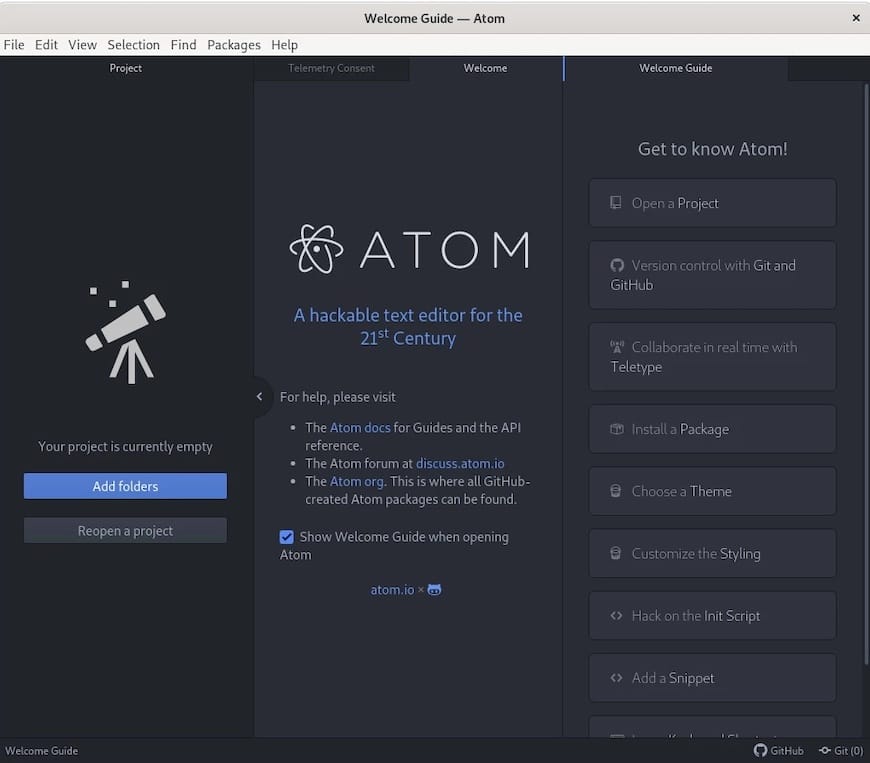How To Install Atom Text Editor on AlmaLinux 9

In this tutorial, we will show you how to install Atom Text Editor on AlmaLinux 9. In the world of software development, having the right tools is crucial for efficiency and productivity. One such tool that has gained popularity among developers is the Atom Text Editor. Developed by GitHub, Atom is a versatile and customizable text editor that supports numerous programming languages and offers a plethora of features. This guide will walk you through the process of installing Atom on AlmaLinux 9, ensuring you have everything you need to get started with this powerful editor.
Understanding Atom Text Editor
Atom is an open-source text editor designed for developers and programmers. It is built on web technologies, making it highly customizable and extendable. Here are some of its key features:
- Customizability: Users can tweak the interface and functionality through themes and packages.
- Multi-language Support: Atom supports various programming languages, making it suitable for diverse coding tasks.
- Built-in Git Integration: Seamlessly manage version control within the editor.
- Extensive Plugin Ecosystem: A rich library of community-contributed packages enhances functionality.
Prerequisites for Installation
Before diving into the installation process, ensure your system meets the following prerequisites:
- System Requirements: AlmaLinux 9 should be running on your machine with adequate resources (at least 2 GB RAM recommended).
- User Permissions: You need a non-root user with sudo privileges to install software.
- System Update: Ensure your system packages are up to date to avoid compatibility issues.
Methods to Install Atom on AlmaLinux 9
This section outlines three primary methods to install Atom on AlmaLinux 9: using an RPM package, Snap, and Flatpak. Each method has its advantages, so choose the one that best fits your needs.
Method 1: Installing via RPM Package
The first method involves downloading and installing the RPM package directly from GitHub. This is a straightforward approach that many users prefer.
Step-by-Step Guide
Update System Packages: Open your terminal and run the following commands to ensure your system is up to date:
sudo dnf clean all
sudo dnf updateDownload the Latest RPM Package: Use the wget command to download the latest version of Atom. As of now, you can use this command (replace with the latest version if necessary):
wget https://github.com/atom/atom/releases/download/v1.60.0/atom.x86_64.rpmInstall the Package: After downloading, install Atom using the following command:
sudo dnf localinstall atom.x86_64.rpmTroubleshooting Dependency Issues: If you encounter dependency issues during installation, you may need to install missing packages manually. For example, if it prompts for `lsb-core`, install it using:
sudo dnf install redhat-lsb-coreMethod 2: Installing via Snap
If you prefer a more universal package management approach, Snap is an excellent choice for installing Atom. Snap packages are self-contained and work across various Linux distributions.
Step-by-Step Guide
Install Snapd: First, you need to install Snapd, which manages Snap packages. Run the following command:
sudo dnf install snapd -yEnable Snapd Socket: Enable and start the Snapd socket with these commands:
sudo systemctl enable --now snapd.socketCreate a Symbolic Link: This step makes Snap commands available in your shell environment:
sudo ln -s /var/lib/snapd/snap /snapInstall Atom Using Snap: Finally, install Atom by executing this command:
sudo snap install atom --classicThis method simplifies installation and updates since Snap handles dependencies automatically.
Method 3: Using Flatpak
If you are looking for another alternative, Flatpak provides a robust way to install applications in a sandboxed environment. This can enhance security and stability.
Step-by-Step Guide
Install Flatpak: Begin by installing Flatpak on your system with this command:
sudo dnf install flatpakAdd Flathub Repository: Flathub hosts many Flatpak applications, including Atom. Add it using this command:
flatpak remote-add --if-not-exists flathub https://flathub.org/repo/flathub.flatpakrepoInstall Atom via Flatpak: Now you can install Atom by running:
flatpak install flathub io.atom.AtomThis method benefits from isolation, meaning that any issues with one application won’t affect others on your system.
Accessing Atom After Installation
Your installation process is complete! To launch Atom, you can either type `atom` in your terminal or find it in your application menu under Development or Programming categories. Once opened, take some time to explore its settings and customize it according to your preferences.

Troubleshooting Common Installation Issues
If you encounter issues during installation or when launching Atom, here are some common problems and their solutions:
- Error: Missing Dependencies: If you see messages about missing dependencies while installing via RPM or other methods, ensure all required packages are installed using DNF or YUM.
- Error: Command Not Found: If running `atom` gives a “command not found” error, check if Atom was installed correctly or if it’s in your PATH. You might need to restart your terminal session or log out and back in.
- Error: Performance Issues: If Atom runs slowly or crashes frequently, consider checking for updates or disabling unnecessary plugins that may consume resources.
- Error: Snap/Flatpak Issues: If you face issues with Snap or Flatpak installations, ensure that both services are running correctly. Restarting them may resolve temporary glitches.
- No Internet Access for Packages: If you’re behind a firewall or proxy, make sure your system can access external repositories for downloading packages.
Add-ons and Customization Options in Atom
A significant advantage of using Atom is its extensive library of add-ons and themes that enhance functionality. Here are some popular options to consider after installation:
- Themes: Add visual appeal by installing themes from the package manager. Popular choices include One Dark UI and Seti UI.
- Linter Packages: Linter packages help identify errors in code as you write. Consider installing `linter` along with language-specific linters such as `linter-python` for Python development.
- Syntax Highlighting Packages: If you’re working with less common languages, look for syntax highlighting packages tailored to those languages.
- GitHub Integration Packages: If you’re collaborating on projects hosted on GitHub, consider installing packages like `github` for seamless integration with repositories.
- User Defined Snippets: custom snippets for frequently used code blocks to speed up your workflow.
Congratulations! You have successfully installed Atom. Thanks for using this tutorial for installing the Atom Text Editor on AlmaLinux 9 system. For additional help or useful information, we recommend you check the official Atom website.